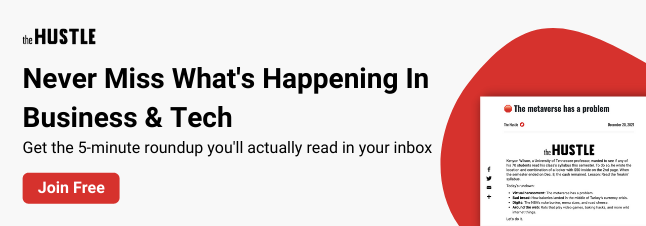As an entrepreneur, you have to make dozens of decisions every day, both big and small. The wrong call could cripple your business, but too much time worrying over options will slow you down.
Luckily, there are lots of simple tricks and techniques that can help you achieve faster and more strategic decision-making, whether you’re facing a question alone or as part of a team.
1. Decision mapping
This is a simple and visual way of laying out a decision. Start with the problem you are trying to solve. Below that, list all the possible options available to you, then add the pros and cons associated with each option. You also add another layer with details and questions about each pro and con.
 Image source: Creately
Image source: Creately
2. Three-legged stool
“There are always three components to every decision,” says executive coach Michelle Florendo. You can think of a decision as a three-legged stool with each leg representing one component. If any one is missing, your stool won’t function. This representation of a decision helps to make sure you don’t miss something important.
i) Values or objectives
Ask yourself, what really matters? What is the goal? If you’re making decisions with co-founders or investors, you might assume that you are all on the same page — but one of you could be optimizing for profit while another is optimizing for growth.
Setting a “North Star” is a good way to start navigating a decision.
ii) Alternatives
Have you considered all the options? Is there a creative alternative that you’re missing? Even if you’re short on time, it’s worth briefly considering this leg of the stool.
iii) Information
“In the startup space,” says Florendo, “the information component can be as much about what information you don’t have as the information you do because, when you’re creating new things, there are usually a lot of unknowns.”
You can make a plan to get any missing information or ask questions like “How will I proceed if I don’t know x?” and “How long am I willing to wait to get this information?”
Risk is an important category of information. You should evaluate risk both in terms of magnitude (how bad would it be?) and likelihood (what’s the probability of that happening?).
Feelings can also be a relevant piece of information. Untangling how you feel about a decision and separating that from other data can create clarity.
3. The six links of decision quality
This six-step checklist comes from decision-making expert Carl Spetzler. It looks like this.
- Framing
- Values
- Alternatives
- Information
- Sound reasoning
- Commitment to action
Framing is figuring out what decision you want to make and the scope of that decision.
Spetzler gives an example of when he and his wife were deciding what color to paint their house. They got sidetracked by ideas for a broader renovation, which eventually led to the question, “How long will we stay in this house?” and then “What do we want to do with the rest of our lives?” The decision and its scope had rapidly changed.
Framing a decision helps you prioritize and focus on what is practical to address right now and what can be left until later. Jot down what’s on your plate and separate out the decision you’re making right now from the others.

Image source: Michelle Florendo
Steps two through four of the checklist are the same as the components of the three-legged stool.
Step five is sound reasoning. This is where you consider whether you have any biases that might create a blind spot in your decision-making.
“In the entrepreneurial world,” says Florendo, “there is a bias for risk-taking. You kind of need to be that way in order to go out and start something.”
Other common decision distortions include:
- Action bias: When there is a problem, humans have a tendency to act, even if inaction is the best course.
- The sunk-cost fallacy: The irrational idea that if you have invested time, energy, and/or money into something, you should continue to pursue it, even if the cons outweigh the pros.
Once you’re aware of your biases, you can compensate if necessary.
Step six is committing to the decision and taking action.
4. The Ooda loop
The Ooda Loop is a four-step approach that was developed by military strategist and US Air Force colonel John Boyd to help soldiers make decisions in conflict environments. This approach can work well for startups, which often face rapid, unexpected changes.
Ooda stands for:
Observe - Take in a snapshot of the situation.
Orient - Evaluate your options.
Decide - Make a decision
And finally, Act.
It’s called a loop because you need to constantly repeat the process as new information arrives. It’s useful to determine a cadence for your decision-making.
Figure out how often you want to restart the Ooda process. Reevaluating your decision too regularly will make things chaotic, but you do need to adapt as information evolves.
Having an iterative approach can take some of the stress out of decision-making. Alexis Grant, founder of They Got Acquired, says she thinks of almost every business decision as an experiment.
“Rather than committing to something forever, I’m trying it out once or twice, and if it doesn’t work, I can adjust course.”
5. Decision matrix
A decision matrix is a visual way of evaluating different options according to your values. You write the alternatives across the top of the grid and your values or objectives along the side.
You then fill in each block on the grid according to how well that alternative matches your value. You can do this with little bubbles, as below, or with a numerical score.
In this example, the decision-maker is comparing different jobs against values like money and location. Santa Claus has to live in the cold, isolated North Pole, so that job doesn’t meet the decision-maker’s location preferences — but he only works one day a year, so the work-life balance is great. It’s not clear what Santa earns, so that’s a question mark.
This tool makes it easy to see what information is not available and to focus on what matters.
 Image source: Michelle Florendo
Image source: Michelle Florendo
6. Pugh matrix
The Pugh matrix uses a numerical score to evaluate alternatives against a set of criteria.
This tool is best suited to when you have some kind of baseline against which to measure other options.
It is a good tool for people who like to think in terms of numbers. It has the added benefit of allowing you to weight your different criteria so that factors you really care about carry more weight.
 Image source: Modern Analyst
Image source: Modern Analyst
Here’s how you do it:
- Identify the criteria you want to optimize for and list them in the first column.
- Give a weighting to each criteria.
- Select one option as your baseline. In the example above, the current situation is your baseline. This will have a score of zero for every criteria so that other alternatives can be evaluated relative to that baseline.
- Come up with some other alternatives and list them along the top.
- Evaluate each alternative against that baseline. Give it a score according to whether it is the same as your baseline (0), better (1), or worse (-1).
- Multiply your answer by the weighting to get a weighted score. In this example, Alternative #1 has a weighted score of 5 for effectiveness.
7. Force field analysis
This tool was created in the 1940s by social psychologist Kurt Lewin. It is a way of evaluating a plan by identifying the different forces that will drive that plan forward and those that will create resistance.
It works like this:
- Select a plan that you want to implement.
- Brainstorm all the forces both within and outside your organization that could drive that plan forward.
- Do the same for forces that will act against your plan.
- Allocate scores to each force, where 5 is a very strong force and 1 is a very weak force.
- Draw your force field.
- Think about how you could reinforce positive forces and counter negative forces.
 Image source: Mind Tools
Image source: Mind Tools
8. The worst-case scenario approach
Kyle Vamvouris, founder of sales consultancy Vouris, prioritizes speed in decision-making. “Most of the time, the worst that can happen isn’t that bad,” he says. “I’d rather make 10 decisions, even if a couple of them turn out to be duds, than only make five decisions and have them all be perfect.”
He starts by asking himself, “What’s the absolute worst possible outcome?” Then he thinks about what would happen next if that worst thing came true.
“If the worst-case scenario doesn’t mean the end of my business, I’m good to go.” If the worst outcome is really bad, “I’ll only do it if the chances of [the outcome] happening is super low.”
9. Jeff Bezos’ two doors
In a 2016 letter to Amazon shareholders, Jeff Bezos wrote, “Some decisions are consequential and irreversible or nearly irreversible — one-way doors — and these decisions must be made methodically, carefully, slowly, with great deliberation and consultation.”
He calls these Type 1 decisions. If you mess one up, you can’t go back and fix it.
“But most decisions aren’t like that,” he continues, “they are changeable, reversible — they’re two-way doors.”
He calls these Type 2 decisions. If you mess one up, it’s not that big a deal. You just go back through the door, and you’re where you started.
The trick is making sure you aren’t wasting time and resources on treating all your decisions as Type 1 decisions, or rushing through irreversible Type 1 decisions.
10. SWOT analysis
SWOT analysis is a technique designed by Albert Humphrey, a Stanford University researcher, using data from companies engaged in long-term planning. It can be used to assess your business in relation to a particular plan.
SWOT stands for Strengths, Weaknesses, Opportunities, and Threats. The steps are as follows:
- Brainstorm the strengths and weaknesses of your business.
- Write down all the threats and opportunities that your business faces.
- Ask whether the strengths and weaknesses of your business make it compatible with the plan in question.
- Consider how the threats and opportunities that your business faces could impact the plan.
11. The Eisenhower matrix
The Eisenhower matrix is a time management tool that can help you make decisions about how to prioritize different tasks. For each task, ask yourself two questions:
- Is it urgent?
- Is it important?
Add the task to the relevant block and act accordingly.
 Image source: HubSpot
Image source: HubSpot





